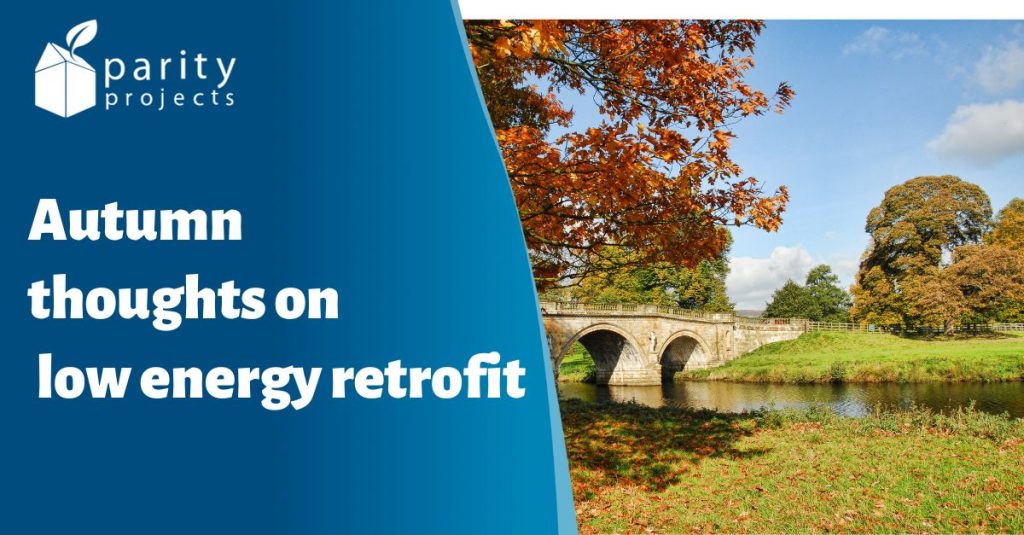
Now that we’re officially into autumn, it’s fast approaching that time of year again when many of us (myself included) start thinking about how soon is ‘too soon’ to stick the heating on. Having spent most of last week working in the Lake District I can tell you that for some that time is already here!
It’s also the time of year when those of us living in older, less thermally efficient houses start to remember just how cold it can get over the winter, or how expensive it can be to maintain reasonable comfort levels.
 Anyone with an eye on the mainstream media over the last few months will be aware that most Government energy efficiency schemes have now either been scrapped or are under consultation. While this initially sounds like very bad news, it’s worth noting that the majority of these schemes are being scrapped because they either were massively under-subscribed (Green Deal) or were only meant to be short term drivers towards a long term goal (Green Deal Home Improvement Fund / ECO).
Anyone with an eye on the mainstream media over the last few months will be aware that most Government energy efficiency schemes have now either been scrapped or are under consultation. While this initially sounds like very bad news, it’s worth noting that the majority of these schemes are being scrapped because they either were massively under-subscribed (Green Deal) or were only meant to be short term drivers towards a long term goal (Green Deal Home Improvement Fund / ECO).
While these schemes did provide a useful incentive for some, our ten years of supporting clients through low-energy retrofit projects has shown us that homeowners are usually willing to use their own money to finance works so long as at least one of three aims are achieved:
- That the measures improve the property
- That the investment results in an overall saving through energy bills
- The property ends up warm and cosy
This tends to ring true whether we are talking about whole house retrofit or looking at a smaller package of measures. The key here being that homeowners need to feel they are getting something for their money. This is where energy efficiency improvements differ from most other investments homeowners will make, i.e. when you buy a new sofa for example, it’s clear what you’re getting for your money straight away. This is of course the reason Parity Projects was set up in the first place; to offer bespoke guidance to homeowners as to which measures will have a positive impact on either their bills or comfort levels in their property (or both).
 So what do you do this autumn if you’re a homeowner with a cold, inefficient house but not looking to invest in a whole house retrofit project that may take 10-15 years to pay for its self in running cost savings? Our advice would be that if you’re looking to stay in the house for at least 5 years then it’s definitely worth thinking about a package of retrofit measures with a sub 5 year payback period. Obviously savings will vary from property to property, but it’s sometimes surprising the savings to be found from non-invasive, relatively low cost measures. If you are looking to stay in the property in the longer term but maybe the up-front cost of the ‘big win’ retrofit measures is putting you off then it’s worth noting that smaller improvements could be made now which allow for future improvements to be made as and when they are financially viable.
So what do you do this autumn if you’re a homeowner with a cold, inefficient house but not looking to invest in a whole house retrofit project that may take 10-15 years to pay for its self in running cost savings? Our advice would be that if you’re looking to stay in the house for at least 5 years then it’s definitely worth thinking about a package of retrofit measures with a sub 5 year payback period. Obviously savings will vary from property to property, but it’s sometimes surprising the savings to be found from non-invasive, relatively low cost measures. If you are looking to stay in the property in the longer term but maybe the up-front cost of the ‘big win’ retrofit measures is putting you off then it’s worth noting that smaller improvements could be made now which allow for future improvements to be made as and when they are financially viable.